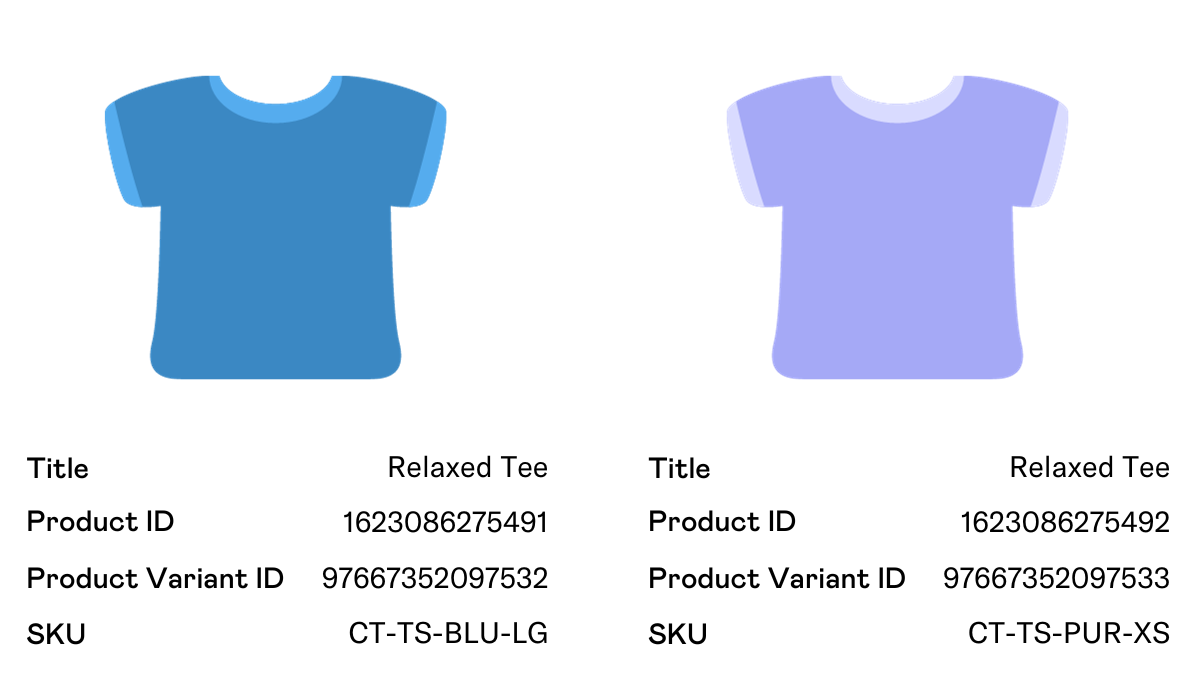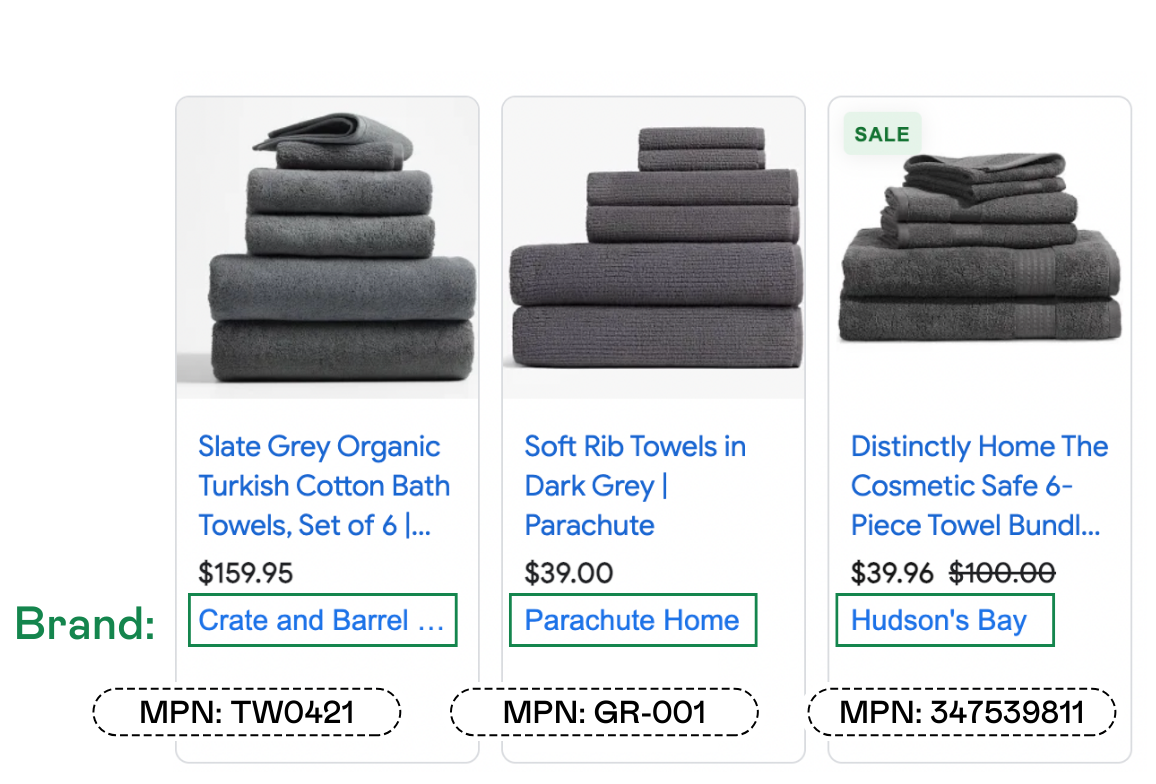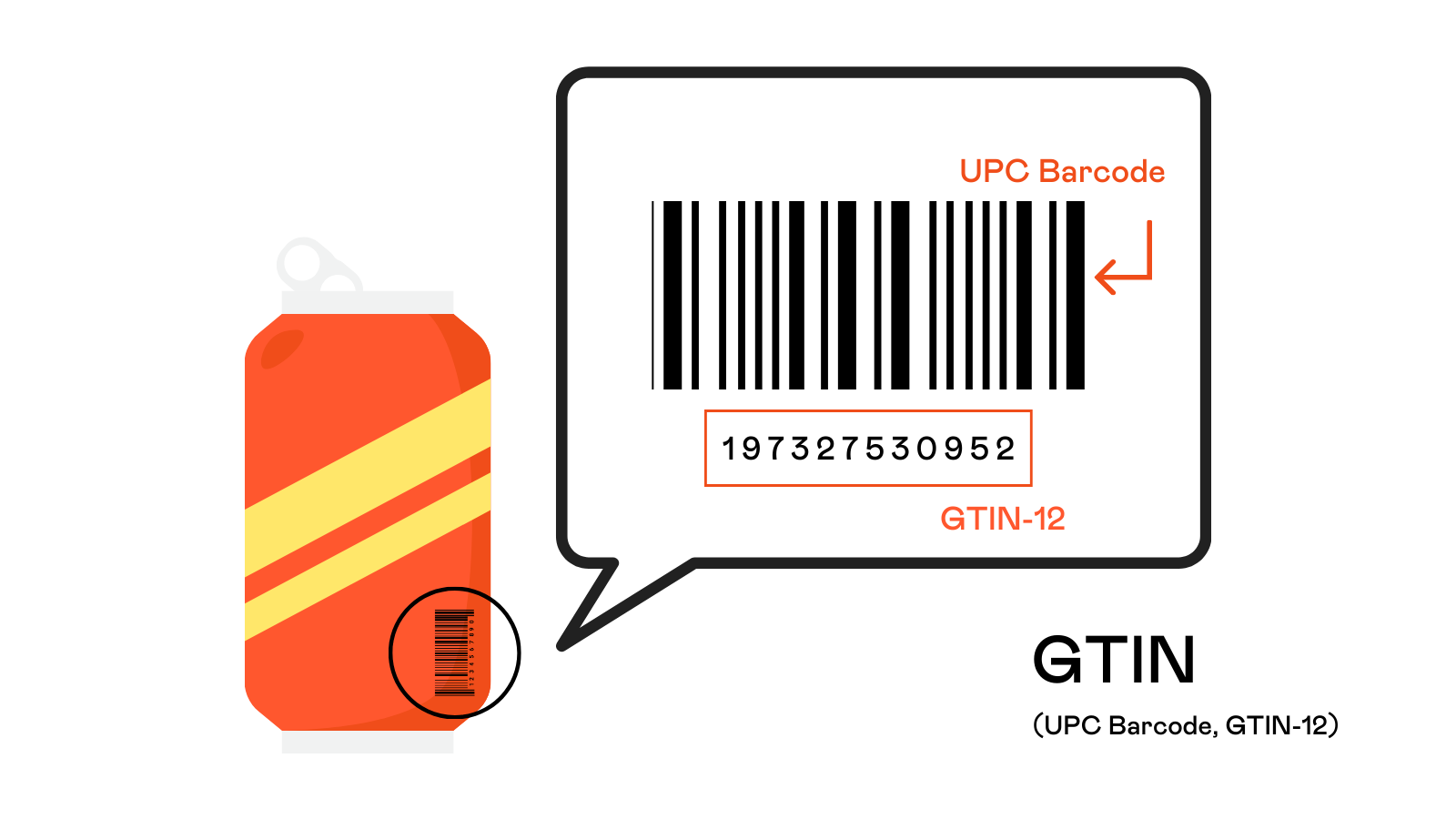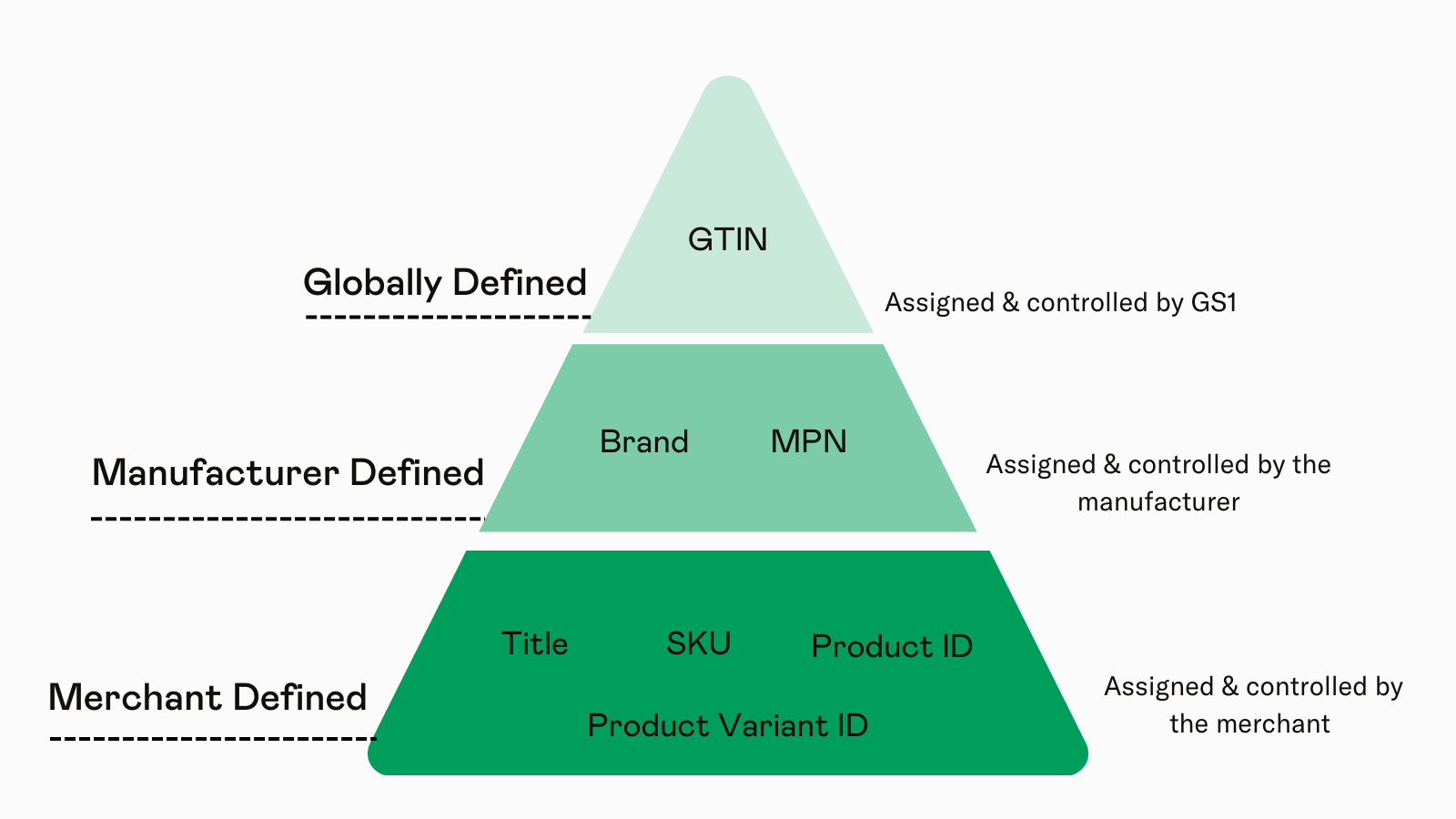 All blog posts
All blog posts
Product Identifiers Explained (SKU, Brand, MPN, GTIN)
Product Identifiers bridge the gap between your product’s physical and digital identity. They’re used to define exactly what your product is so that it can be distinguished from other products in your Product Catalog and the global marketplace.
What are Product Identifiers?
Product Identifiers are a series of numbers or letters used to identify specific products. Unlike other product data such as a product's description or image, Product Identifiers are permanent. Once they're assigned, they should stay consistent over time so they can be used to identify products no matter where or when the product is listed.
Product Identifiers are stored in your Product Catalog and are referenced by trade partners to quickly get information about the products you sell. For ecommerce stores, Product Identifiers often become relevant when listing your products on channels like Google Shopping or Amazon. Over time, you’ll find they come up when you want to optimize your product listings for visibility or when introducing a new app into your tech stack that requires product data.
Types of Product Identifiers
There are different types of Product Identifiers that each serve their own purpose. Some are more helpful for internal identification, while others are better at defining products in the global marketplace and across different sales channels.
Product Identifiers are defined on 3 levels
We can group Product Identifiers into three levels according to how they’re assigned and controlled.
Merchant Defined
Identifiers at this level are assigned and controlled by the merchant (i.e. the brand that sells the product). They are only unique to you (the merchant), and are used for internal identification to keep track of sales and inventory data. It’s also very common for the apps connected to your store (e.g. a shipment & delivery app) to use these Identifiers to perform certain actions such as updating inventory levels when an order is fulfilled.
Identifiers at this level let merchants choose how they want their products to be identified across their Product Catalog. They can go by different names, but the most common Merchant defined Identifiers are the following:
SKU (stock-keeping unit)
This is an alphanumeric code that merchants assign to their own products for internal tracking of sales and inventory. They follow different formats, but they’re usually an abbreviation of meaningful product attributes so it's easy to identify a product across a catalog without having to look at the product name.
Product ID & Product Variant ID
These are sequences of numbers generated by your ecommerce platform (e.g. Shopify) for every product and product variant. They are mainly used by your ecommerce platform and other connected apps for managing and syncing product data.
Title
This is the name a merchant gives their products and is displayed on product display pages and product listings.

It’s important that you don't reuse Identifiers at this level and that each product has its own unique Identifier. If sales data is tied to a product’s SKU and the product becomes discontinued, if the SKU is re-used for a new product, you’re not able to clearly track the new product’s performance. This is why Merchant defined Identifiers should be unique across catalogs and time.
Manufacturer Defined Identifiers
Identifiers at this level are assigned and controlled by the manufacturer of a product, they cannot be created by you (the merchant). These Identifiers are universal across all partners (i.e. distributors, wholesalers, retailers) and link a product back to its source.
There are other names for Identifiers at this level such as Part Number or Model Number. But below are the most common types of Identifiers for ecommerce brands:
MPN (manufacturer part number)
An MPN is an alphanumeric code issued by the manufacturer of a product. It's used to specify what a product is and who it's made by. Manufacturers set their own standards of formatting MPNs and use them across all products they produce.
Brand
This represents the Brand name a company has given their products. Unlike other Product Identifiers, all of the products made by one vendor/brand share the same Brand name. A Brand only specifies who the product belongs to, not what the product is. Therefore it's mainly used by consumers to help identify products from others on the market.

Manufacturer defined Identifiers are really important when listing your products on other channels, like Google Shopping. When products are functionally the same, for instance, grey towels, Google needs a way to differentiate all of the grey towels on the platform. Knowing where each product is made and who it belongs to, gives Google enough information to distinguish each variant from the others on the platform. This also helps get your products displayed in relevant search results.
Globally Defined Identifiers
Beyond Merchants and Manufacturers, there are Globally defined Identifiers that uniquely define products across different regions and channels (i.e. the global marketplace). All Global Identifiers are assigned and controlled by a single organization called GS1. This is a governing body that creates, indexes and manages all of the different types of Global Identifiers. The most common type of Global Identifier you will hear about is the GTIN (Global Trade Item Number).
GTINS
GTINs are part of an internationally standardized system developed by GS1 that is used to uniquely define products. In this system, there are two parts; data carriers and data itself. A data carrier is a barcode, which is the symbol of black and white lines that gets scanned at points of sale. The data stored inside a barcode is a GTIN, an 8-14 digit code that gets read by scanners. It’s also found underneath a product’s barcode.
There are four different types of barcodes that exist depending on what the product is and where it’s created.
- ISBN - International Standard Book Number
- UPC - Universal Product Code
- EAN - European Article Number
- JAN - Japanese Article Number
Depending on what type of barcode your product is assigned, its GTIN will follow one of four structures: GTIN-8, GTIN-12, GTIN-13, or GTIN-14. A product is not assigned either a UPC or a GTIN-12. A product is assigned a UPC that uses a GTIN-12 structure.

Because GTINs are highly standardized and must be purchased from GS1, any product with a valid GTIN cannot be mistaken for another. This simplifies every process and touchpoint your product is involved in. For example, marketplaces can efficiently index your products so they’re being shown to customers with a high intent to purchase. Your 3PL uses GTINs to streamline operations and minimize order errors. Customs at the border even use GTINs to quickly authenticate your products and get them transported.
Product Identifiers are important for every ecommerce brand
Product Identifiers are how we identify a physical product when it can’t be seen. They’re the glue that holds the ecommerce ecosystem together, ensuring that products are accurately defined, located, and found by the right customers.

It doesn’t matter if you only sell 1 product or 100 products, every brand should make sure they’re using Product Identifiers correctly. Those who use inaccurate data and don’t update their Product Catalog, face trouble down the line as they begin to scale and their catalog becomes more sophisticated.




